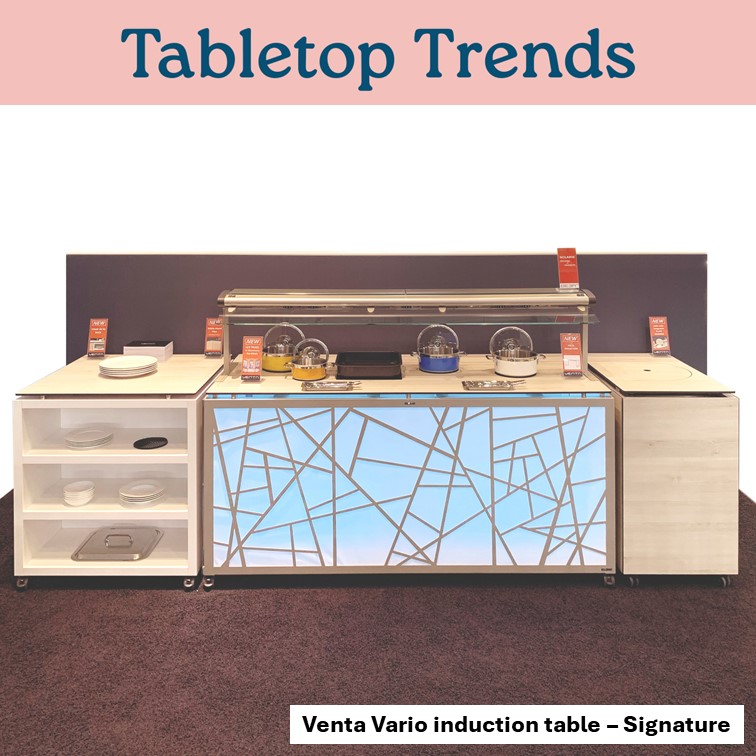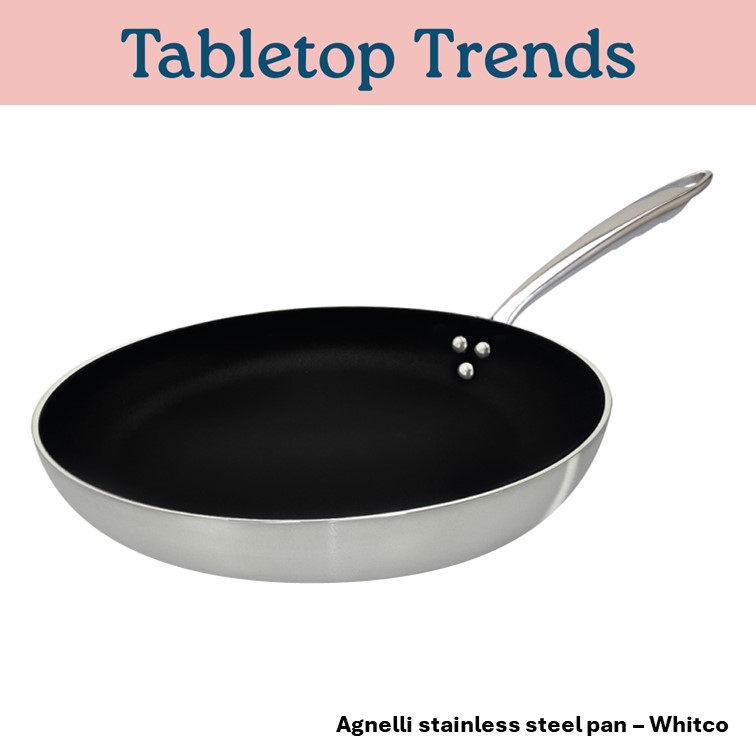Tabletop Trends: Induction
Induction takes off
Induction cooking has a surprisingly long history, dating back to the early 20th century, but it is only in the last couple of decades that it has taken off. The reasons for its popularity in foodservice are fairly simple: induction is ideal for kitchens looking to decrease their environmental footprint by reducing reliance on fossil fuels. Furthermore, and probably more effective as a method for encouraging companies to make the switch, induction is very energy efficient, bringing lower running costs. The lower levels of heat released into the kitchen environment by using induction equipment can also reduce the need for additional systems like ventilation, which in turn can further lower energy consumption. Induction technology has been increasingly popular for large operators, including pub and restaurant groups, as well as contract caterers and the public sector, especially those serving the education and healthcare sectors, although it is increasingly being integrated into smaller businesses as well.
Induction also has health and safety benefits, as it only heats up the cookware directly, rather than heating the cooking surface. This greatly reduces the chance of accidental burns from hot equipment in the kitchen.
Getting the right cookware is a vital part of introducing induction into a catering environment. Steel, stainless steel and cast iron ware were the main choices for this until recently, but many companies are now offering aluminium alternatives. As long as these items contain a base made from magnetic metal then a range of materials can be used, which, combined with increasingly diverse types of equipment using induction, is allowing the technology to be used in many more situations.
For many years induction was looked on as inferior to more traditional appliances, as many of those early devices weren’t able to replicate the intricacies of technique afforded by gas burners, or were too large to be anything other than permanently installed in certain locations. But the technology and sophistication of induction equipment has moved on massively and induction is now very much a practical alternative to gas.
Outside of prime cooking, one of the biggest growth areas for induction technology has been hot holding. For example, induction has become a popular choice for heating chafing dishes for buffets. Meanwhile, the emergence of portable induction equipment that can be powered by standard 13amp sockets has helped to drive its growth throughout foodservice and catering. With rising energy costs, plus the need to meet net zero and sustainability targets driving demand for efficient and eco-friendly equipment, induction is going to become increasingly common throughout all catering sectors.
Don't miss out on Tabletop Trends - Sign-up to our mailing list
The next Light Equipment and Tableware Forum will be taking place on 13th & 14th May 2025 at the Oxford Belfry.
If you are a distributor or dealer of light equipment and tableware and want to experience the latest trends and innovations to hit the market then please register your interest to attend and we will make sure that you are notified as soon as tickets are live.
“There’s no way that our sales teams could visit this many suppliers over the course of one a half days. The LET Forum is brilliant for bringing everyone together, saving us time on the road, and ensuring that we are ahead of the curve for market innovations”, LET Distributor Delegate.
Our 2024 Light Equipment and Tableware forum treated delegates to product showcases from Amefa, Contacto, Dalebrook, Dualit, Elia, Foodservice Equipment Marketing (FEM), Frilich, Grunwerg, Lifetime Brands, Metcalfe, Mitchell and Cooper, Pro Foodservice Reps, Signature FSE, Tablecraft, Thunder Group, and Zodiac.
This article is part of Tabletop Trends - FEA's quarterly light equipment and tableware sector newsletter.
Tabletop Trends is produced and distributed by the Foodservice Equipment Association, the UK's largest independent foodservice equipment trade association. All suppliers listed in this article are FEA members. A full list of Light Equipment and Table suppliers can be found on our Meet Our Members section - simply select Light Equipment / Food Prep from the Product Type drop down menu
Contact the FEA
Rotherwick House, 3 Thomas More Street, St. Katharine Docks, London, E1W 1YZ
020 7793 3030 | enquiries@fea.org.uk







